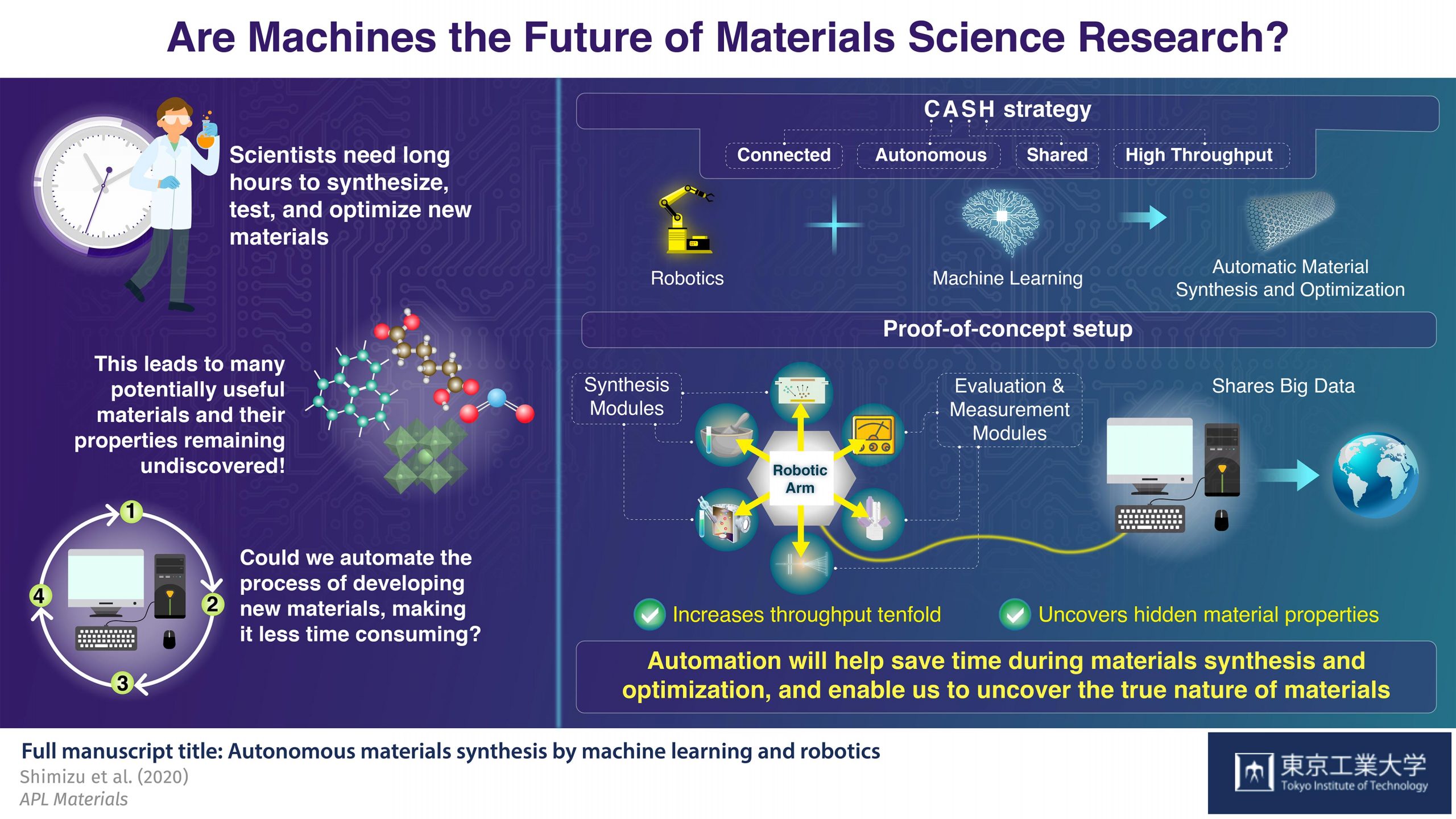CASH, which combines machine learning, robotics and big data, shows the enormous potential in materials science. Only through coevolution with such technologies can future researchers work on more creative research, which leads to an acceleration of materials science research. Photo credit: Tokyo Tech
At the center of many scientific breakthroughs in the past is the discovery of novel materials. However, the cycle of synthesizing, testing, and optimizing new materials routinely requires many hours of hard work. Because of this, many potentially useful materials with exotic properties go undiscovered. But what if we could automate the entire novel material development process using robotics and artificial intelligence and make it so much faster?
In a recently published study at APL materialScientists at the Tokyo Institute of Technology (Tokyo Tech), Japan, under the direction of Associate Professor Ryota Shimizu and Professor Taro Hitosugi, developed a strategy with which fully autonomous materials research can become a reality. Her work focuses on the revolutionary idea that laboratory devices are “CASH” (Connected, Autonomous, Shared, High-Throughput). With a CASH setup in a materials laboratory, researchers only have to decide which material properties they want to optimize and supply the system with the necessary ingredients. The automatic system then takes control and repeatedly prepares and tests new connections until the best one is found. Using machine learning algorithms, the system can use prior knowledge to decide how to change the synthesis conditions to achieve the desired result in each cycle.
To demonstrate that CASH is a viable strategy in solid-state materials research, associate Prof Shimizu and his team have developed a proof-of-concept system consisting of a robotic arm surrounded by several modules. Its structure was designed to minimize the electrical resistance of a titanium dioxide thin film by adjusting the deposition conditions. Therefore, the modules are a sputter deposition device and a device for measuring resistance. The robotic arm transferred the samples from module to module as needed, and the system autonomously predicted the synthesis parameters for the next iteration based on previous data. They used the Bayesian optimization algorithm for the prediction.
Amazingly, their CASH setup managed to produce and test around twelve samples per day. This equates to a ten-fold increase in throughput compared to what scientists can achieve manually in a traditional laboratory. In addition to this significant increase in speed, one of the main advantages of the CASH strategy is the ability to create large shared databases that describe how the material properties change depending on the synthesis conditions. In this context, Prof. Hitosugi remarks: “Databases with substances and their properties are still incomplete. With the CASH approach, we could easily complete them and then discover hidden material properties, which would lead to the discovery of new laws of physics and insights through statistical analysis. ”
The research team believes the CASH approach will revolutionize materials science. Databases generated quickly and easily by CASH systems will be combined into big data, and scientists will use advanced algorithms to process them and extract human-understandable expressions. As Prof. Hitosugi notes, machine learning and robotics alone cannot find knowledge or discover concepts in physics and chemistry. “The training of future materials scientists must develop further. You need to understand what machine learning can solve and adjust the problem accordingly. The strength of human researchers lies in creating concepts or identifying problems in society. Combining these strengths with machine learning and robotics is very important, ”he says.
Overall, this perspective article highlights the tremendous benefits automation could bring to materials science. When the weight of repetitive tasks is taken off the shoulders of researchers, they can focus more on uncovering the secrets of the material world for the benefit of humanity.
Reference: November 18, 2020, APL materials.
DOI: 10.1063 / 5.0020370



